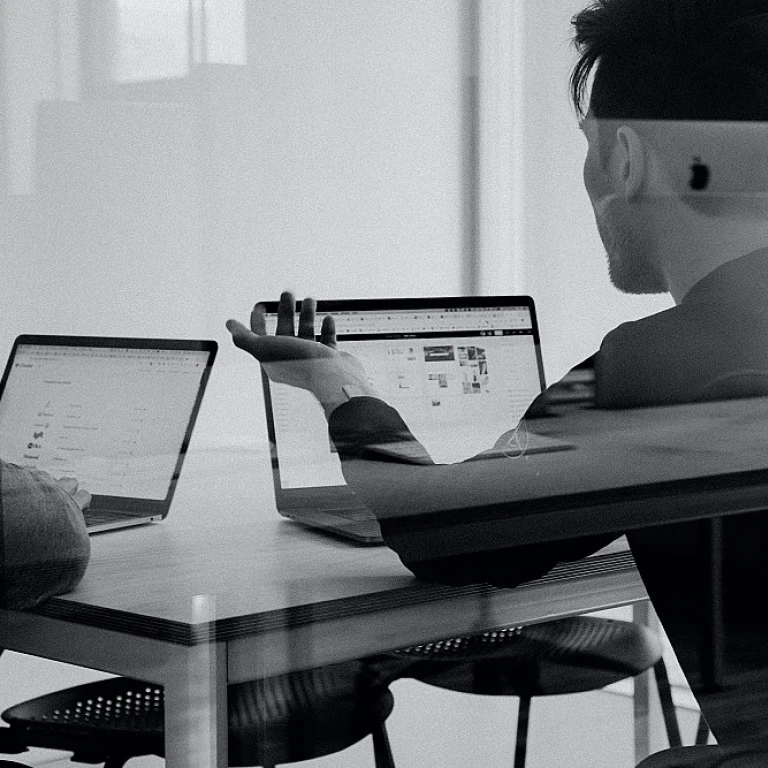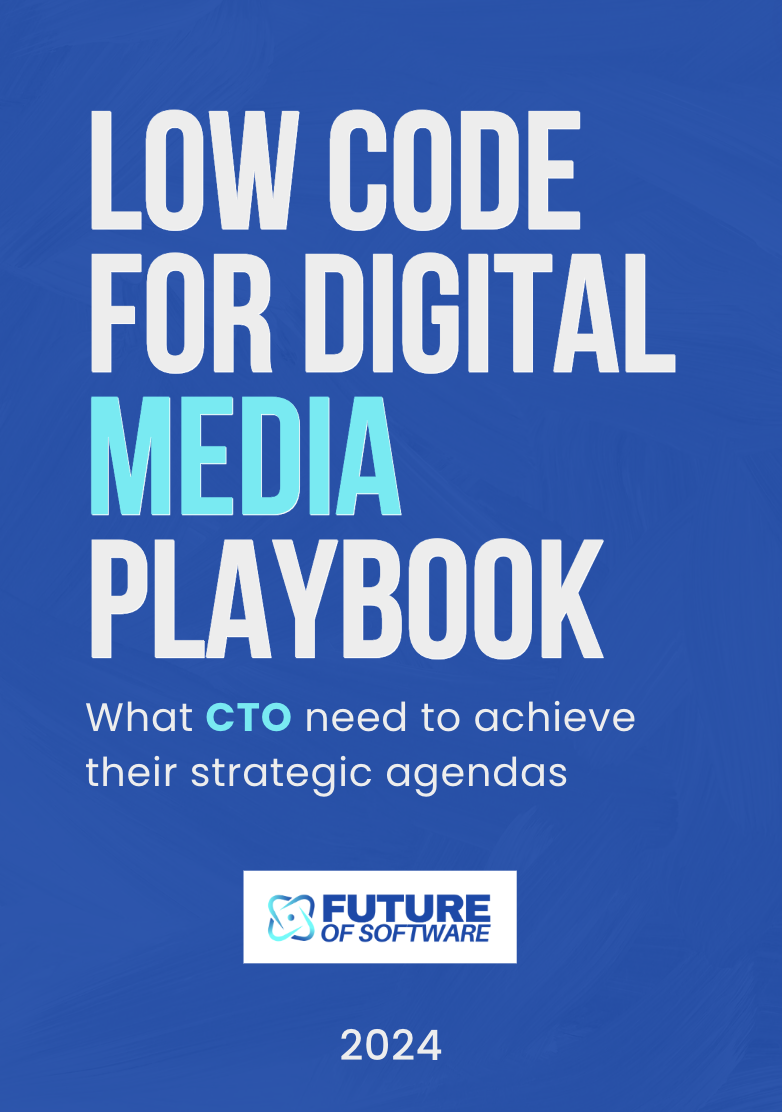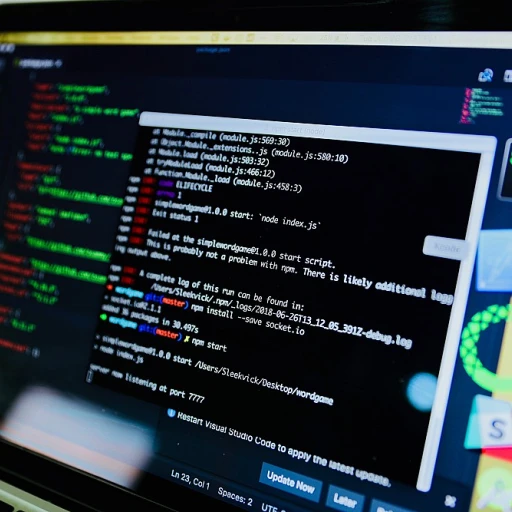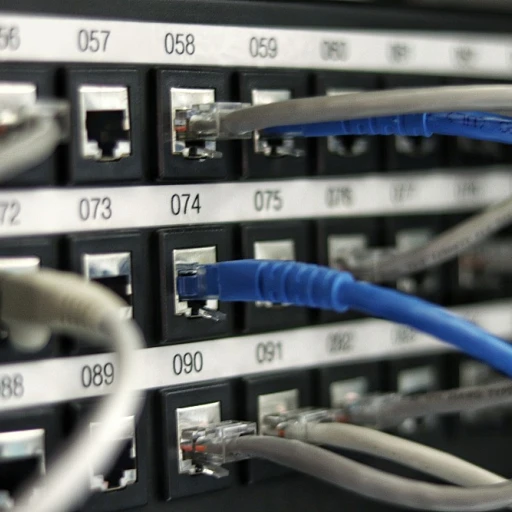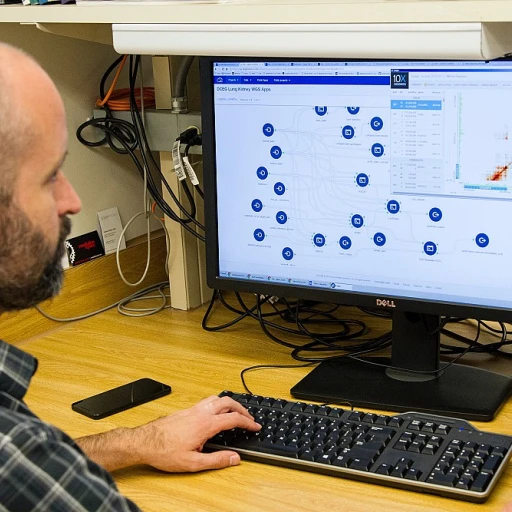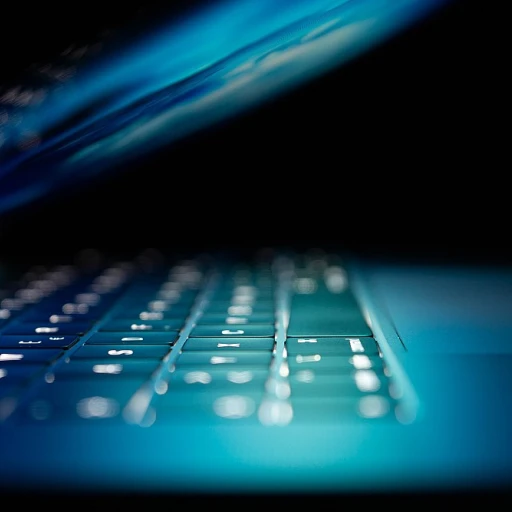
Understanding the impact of AI on job automation
AI's grip on job automation
Artificial Intelligence (AI) is reshaping our job landscape swiftly, and job automation forms a big part of this shift. According to a McKinsey Global Institute report, up to 800 million jobs could be replaced by automation worldwide by 2030. This includes roles in manufacturing, retail, food service, and data entry.
It's already creating waves in some industries. Take self-checkout kiosks in grocery stores: they've made cashiers' roles almost obsolete. Another example is Amazon's use of robots in warehouses, which has reduced the need for human warehouse workers. What's staggering is that a study by Oxford University predicted that near 47% of U.S. jobs are at risk due to automation.
While job automation saves companies resources and optimizes productivity, it poses a significant challenge for workers. As machines handle repetitive and predictable tasks, humans must adapt by taking on higher cognitive roles and constantly upgrading their skills. AI-driven automation is reshaping roles, forcing workers to upskill and assume more complex duties.
Automation isn't universally accepted. Some experts, like MIT's Daron Acemoglu, warn of the risks. Acemoglu and his colleagues found that each robot added to the workforce can reduce the employment-to-population ratio by 0.2 percentage points, suggesting a direct impact on job availability.
As we ponder the future where AI and automation are intertwined deeply with our jobs, it's evident that the workforce must evolve. A peek into the new roles and skills shaped by AI offers some insight into how we can prepare better for the change ahead.
Reshaping the workforce: new job roles and skills in the age of AI
Growth in demand for AI-related jobs
It’s exhilarating to witness how AI has not just added new roles but demand in these jobs is skyrocketing. According to a study by World Economic Forum, by 2025, 85 million jobs may be displaced by a shift in labor between humans and machines, but 97 million new roles may emerge that are adapted to the new division of labor between humans, machines, and algorithms.
Emerging roles and skills
The surge in AI has led to new roles like AI-specialists, data scientists, and machine learning engineers. These require strong analytical skills and a penchant for continuous learning. For instance, data from LinkedIn highlights a 74% annual growth rate for Artificial Intelligence (AI) Specialist roles in the last four years.
Trends in job transformation
Existing roles are being redefined. For example, customer service roles increasingly require understanding AI-driven tools to support repetitive tasks, freeing staff to tackle more complex issues. A report by McKinsey indicated that about 60% of all occupations have at least 30% of activities that are technically automatable.
Expert predictions
Andrew Ng, co-founder of Coursera and an AI thought leader, has famously stated, “AI is the new electricity.” His perspective embodies the vast potential and the transformative power that AI holds in shaping job roles and necessary skills in the future. Experts predict that adaptability and tech-savviness will be invaluable traits in this evolving landscape.
Real-world examples
Take the case of IBM's Watson. It’s been instrumental in healthcare, aiding doctors by diagnosing illnesses faster and with more precision. This necessitates doctors getting acquainted with AI and tons of data analytics. A study from Harvard Business Review highlights that 75% of early AI adopters in healthcare claimed it significantly improved patient care.
AI-driven decision making in the workplace
AI's role in making smarter decisions
When it comes to how companies make decisions, AI has really stepped up the game. So much so that 61% of businesses now rely on it for data-driven insights. It’s not just about crunching numbers faster, it’s about getting to the heart of what those numbers mean. According to McKinsey, companies using AI in decision-making processes saw a 20% increase in efficiency last year alone.
Experts weigh in on AI decision-making
Gary Marcus, a cognitive scientist and AI expert, mentions, “AI doesn’t just learn patterns; it helps us understand them, making our decisions more informed.” His observations highlight AI's potential to dig deeper beyond just surface-level data, providing robust, actionable insights.
Real-world examples
Consider a major retailer’s use of AI in inventory management. By analyzing past sales data, climate conditions, and local events, AI can predict which products are likely to sell out. This helps companies stock smarter, reduce waste, and keep customers happy. Walmart’s collaboration with AI firm Cambrian Technologies reportedly cut down overstocking by 30%, showing AI’s practical benefits in inventory control.
Challenges of relying on AI for decisions
Of course, embedding AI into decision-making isn’t all smooth sailing. One challenge is over-reliance. If an AI system's recommendations are followed blindly, it can lead to catastrophic mistakes. PwC reported that 35% of executives are cautious about AI’s ‘black box’ problem, where the decision-making process of AI is not entirely transparent.
Ethical dilemmas and transparency
The question of ethics also comes into play. Decisions affecting people’s lives must be made with transparency. As Danielle Wood from MIT Media Lab puts it, “AI should augment human decision-making, not replace it.” Ensuring that AI remains an assistant rather than an autonomous decider is crucial for maintaining trust.
Navigating these waters
To strike the right balance, companies are focusing on continuous training for their staff to understand AI's capabilities and limitations. Click here to understand more about integrating smart technologies responsibly.
Ethical considerations and controversies surrounding AI in work
Examining ethical dilemmas and debates with AI in the workplace
The presence of artificial intelligence in the workplace has raised pressing ethical questions, affecting not just businesses but employees and society as a whole. An alarming statistic from a Gallup poll shows that 87% of workers express concerns regarding job security due to automation—a sentiment that paints a vivid picture of anxiety surrounding AI integration.
One ethical controversy revolves around bias in AI algorithms. According to a report by the American Civil Liberties Union, some AI systems are trained on biased data, leading to unfair treatment of certain demographic groups in hiring processes. This issue emphasizes the necessity for developers to ensure fairness, transparency, and accountability in AI systems.
Experts advocate for the inclusion of diverse voices in the development and implementation of AI. Timnit Gebru, a prominent computer scientist and co-founder of the non-profit organization Black in AI, emphasizes that we need ethical frameworks that prioritize human rights as AI technologies affect job markets and societal structures. Gebru's work urges a consideration of how algorithms can perpetuate inequality and suggests putting in place measures to mitigate these risks.
Another key aspect involves data privacy. A survey by the PricewaterhouseCoopers (PwC) revealed that 56% of consumers are not confident in the ability of organizations to safeguard their personal data. Companies face ethical responsibilities to protect employees' information while implementing AI-driven tools that process vast amounts of data.
Moreover, automation poses questions about accountability. In incidents where AI systems make errors—such as misdiagnosing medical conditions or recommending discriminatory hiring practices—who holds responsibility? The late ethicist and philosopher Nick Bostrom emphasized that as machines take more significant roles in decision-making, our framework for accountability must evolve accordingly to prevent harm and ensure justice.
In summary, as we witness AI reshaping work environments, ethical considerations must remain at the forefront. Continuous dialogue surrounding accountability, transparency, bias, and privacy is crucial as organizations navigate the complex intersection of technology and employment. The future work environment hinges not solely on AI advancements but also on the ethical guidelines that govern their deployment.
AI and employee productivity: a double-edged sword?
Boosting productivity: the benefits and pitfalls of AI
AI has the potential to significantly enhance employee productivity in several ways. According to a study by Accenture, AI could boost labor productivity by up to 40%. Imagine having mundane and repetitive tasks automated, freeing up your time to focus on more strategic and creative endeavors.
For instance, AI-powered tools can automate data entry, scheduling, and even customer service through chatbots. IBM reports that their Watson AI system can answer customer queries with 90% accuracy, drastically reducing the workload on human employees. Moreover, AI can analyze massive amounts of data to provide insights that would take humans hours, if not days, to compile, thereby speeding up decision-making processes.
However, it’s not all sunshine and roses. Critics argue that the over-reliance on AI could lead to a lack of critical thinking among employees. A Gartner survey found that 30% of executives believe their organizations are overly dependent on AI for decision-making, which could be risky if the AI systems are not thoroughly vetted and tested. Additionally, a report from Stanford University highlights that AI technologies, if not managed carefully, can lead to employee burnout due to the constant pressure to keep up with AI’s efficiency.
Balancing AI and human intellect
Striking the right balance between leveraging AI for productivity and maintaining human oversight is crucial. According to experts like Dr. Kate Darling from MIT, the future workplace should focus on collaboration between AI and humans, rather than one replacing the other. She emphasizes that AI should be seen as a tool that augments human capabilities.
Some companies are already implementing this balanced approach. For example, Siemens uses AI to assist their engineers in predictive maintenance, but the final decisions and creative problem-solving are left to the human workers. This kind of hybrid approach can ensure that the workforce remains engaged and intellectually stimulated while reaping the benefits of AI-driven productivity.
Case study: AI implementation at Microsoft
Let’s consider Microsoft as a case study. In their customer support division, they implemented an AI system to handle tier-1 issues. According to internal reports, this move resulted in a 50% increase in customer satisfaction and allowed human agents to tackle more complex problems, thus improving overall efficiency.
However, Microsoft also discovered some challenges. Employees initially felt threatened by the AI, fearing job losses. To counteract these fears, the company invested in extensive training programs to upskill their workforce, focusing on how to work alongside AI technologies. This approach not only alleviated concerns but also empowered employees to use AI as a tool rather than a competitor.
Expert insights on the future job market with AI
Expert predictions about job displacement and creation
Experts predict that while AI may displace certain jobs, it will also create new roles that didn't exist before. A study by the World Economic Forum estimates that by 2025, AI and automation could displace 85 million jobs while simultaneously creating 97 million new ones. The key lies in skilling and reskilling the workforce to prepare for these new opportunities.
Role of government and institutions
Government policies and educational institutions play a critical role in mitigating the disruptive impact of AI. Andrew Ng, a prominent AI researcher, emphasizes the importance of implementing workforce development initiatives and lifelong learning programs. Countries like Singapore have already started investing in such programs to prepare their populations for future job markets.
Sector-specific forecasts
Different sectors will experience AI's impact in unique ways. Healthcare, for example, stands to benefit significantly from AI, with the potential to improve diagnostic accuracy by 40%, according to a study published in the Journal of American Medical Informatics Association. However, in sectors like manufacturing, there might be a higher rate of job displacement, necessitating targeted training programs for affected workers.
Challenges in upskilling and reskilling
Implementing upskilling and reskilling programs is not without challenges. Factors such as the pace of technological advancements and varying levels of access to educational resources make it difficult to keep the workforce adequately prepared. Economists like Daron Acemoglu suggest that a collaborative approach involving governments, businesses, and educational institutions is essential for successful adaptation.
Experts' advice for businesses
Experts advise that businesses should proactively invest in training programs to ensure their employees are equipped with the necessary skills. Kate Crawford, a senior researcher at Microsoft, recommends that businesses adopt a holistic approach to workforce development, integrating continuous learning into their organizational culture.
Real-world examples
Several companies are already taking steps to prepare for an AI-driven future. IBM has launched its 'SkillsBuild' program, which offers free learning resources focused on developing technical and professional skills. Similarly, Amazon's 'Upskilling 2025' initiative aims to retrain a third of its workforce in new technologies.
Case studies of AI integration in different industries
Revolutionizing healthcare with AI
The healthcare industry has been one of the most transformative examples of AI integration. According to a study by Accenture, AI in healthcare could create $150 billion in annual savings for the US healthcare economy by 2026. One significant area is diagnostics; IBM's Watson Health, for instance, is capable of analyzing large amounts of medical data to suggest treatment options and diagnose conditions at an accuracy rate of 90%, outperforming average physician accuracy rates.
Dr. Eric Topol, a cardiologist and founder of the Scripps Research Translational Institute, mentions, "AI is enabling doctors to predict diseases long before they manifest, significantly altering the healthcare landscape.” The rise of AI also streamlines administrative tasks. By automating scheduling, billing, and patient data management, healthcare professionals can focus more on patient care rather than paperwork.
Financial sector: AI trading and beyond
In the financial industry, AI has reached a critical role in trading activities. As reported by McKinsey, AI-driven high-frequency trading makes up over 60% of global equity market trading volumes. Algorithms can analyze real-time data and execute trades within milliseconds, far faster than any human trader. BlackRock, for example, utilizes AI to manage its $6.3 trillion worth of assets, optimizing investment portfolios for higher returns.
Moreover, fraud detection has gained a new ally in AI. Companies like Mastercard utilize AI to detect fraudulent transactions by identifying peculiar patterns in spending behavior, reducing false declines and fraud by about 40%.
Retail's AI transformation
Retail has embraced AI in various ways, from customer service bots to personalized shopping experiences. A report by Salesforce indicates that 47% of digital shoppers are open to buying from a chatbot interface. Retail giants like Amazon have developed AI algorithms to recommend products based on browsing and purchase history. This initiative alone attributes up to 35% of the company's sales.
AI-powered analytics also allows retailers to manage inventory more efficiently. Walmart, for example, uses AI to predict product demand and adjust stock levels, minimizing the risk of overstocking or stockouts, which directly affects their bottom line.
Manufacturing automation with AI
AI has significantly impacted manufacturing, particularly in predictive maintenance and quality control. According to Deloitte, predictive maintenance can reduce maintenance costs by 20%, eliminate breakdowns by 50%, and extend machinery life by years. General Electric's AI systems predict equipment failures in their factories and recommend proactive maintenance, saving millions in potential down-time costs.
Additionally, AI-driven robots, often referred to as cobots, work alongside human workers to increase production efficiency. These cobots handle repetitive tasks, allowing human workers to focus on more complex problem-solving activities, therefore, enhancing overall productivity.
AI in agriculture: Increasing yield and reducing waste
Agriculture is not left out of the AI evolution. AI technologies help farmers enhance crop yields and reduce waste. According to a report by the United Nations, AI-powered systems like precision farming could increase food production by up to 70% by 2050 to meet the global food demand. John Deere's AI-based solutions, for instance, provide insights for better planting decisions based on soil health and moisture levels, improving crop output.
AI also plays a role in pest detection and disease management. The use of AI drones that can scan large fields and identify areas of concern ensures targeted treatment, reducing the use of pesticides and enhancing sustainability.
Smart cities: Leveraging AI for urban management
Cities around the globe are adopting AI to manage resources more efficiently. A report by PricewaterhouseCoopers (PwC) indicates that AI-driven smart cities could reduce energy consumption rates by up to 30%. Tokyo, for example, uses AI to control traffic lights, reducing congestion and cutting emissions by optimizing traffic flow patterns.
Furthermore, AI is instrumental in surveillance and safety measures. London has deployed AI to analyze data from CCTV cameras, spotting unusual activity and alerting law enforcement agencies. These AI-enabled systems are not only better at identifying potential threats but also reduce the burden on human operators.
Preparing for an AI-powered future: training and education
Changing the syllabus to include more tech
Training and education are the bedrock for preparing for an AI-driven future. As AI continues to disrupt traditional workflows, educational institutions must reform their syllabus to incorporate tech-oriented subjects. An IBM study highlighted that 79% of global executives believe that the skill gap is a significant challenge posed by AI advancements. This underscores the need to pivot towards a more technology-friendly curriculum.
Real-life courses
Gone are the days when theoretical knowledge sufficed. Real-life courses bridging the gap between theory and practical application are essential. MIT's Sloan School of Management offers an "Implementing AI Solutions in Business" program, emphasizing hands-on learning. Another example is Stanford's AI for Everyone course, which targets diverse audiences to make AI comprehensible and applicable.
Workshops and bootcamps for quick learning
Given the brisk pace at which AI technology evolves, traditional four-year degrees aren't the only pathway. Workshops and bootcamps offer quick, intensive learning experiences. According to Course Report, coding bootcamps have seen a 40% increase in enrollments yearly since 2014, proving their effectiveness in accelerating tech skill acquisition.
Companies need to up their game
Companies can't lag in this education race. Corporate training programs need to shift focus towards AI proficiency. Deloitte's 2020 Global Human Capital Trends report revealed that 53% of organizations are already redesigning jobs due to AI and robotics. Amazon's Career Choice program, offering prepaid tuition to employees for courses in high-demand fields, is a stellar case in point.
Continuous learning is the new norm
AI’s rapid growth means what you learn today may become obsolete tomorrow. Continuous learning and adaptability are no longer optional. A World Economic Forum report suggests that by 2025, 50% of all employees will need reskilling. Personal commitment to lifelong learning, backed by resources from Coursera, Udemy, and other e-learning platforms, is indispensable.
Employee Insights
Individuals already within the workforce have observed the shift first-hand. Marketing specialist Jane Rivera shared, “I had to learn AI tools on the job. Our company now offers monthly training sessions, and it's been a game-changer.”
Integrating AI into education isn't just about adapting; it's about staying ahead. With a proactive approach, both organizations and individuals can harness AI’s full potential.

